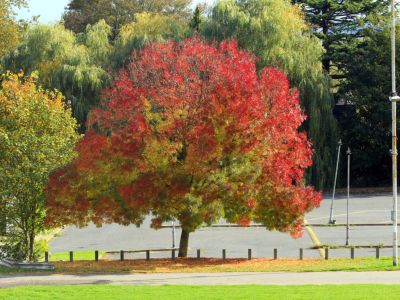Claret Ash Tree Information
Claret ash trees are compact, fast growing, and their deep green leaves have a finer, more delicate look than other ash trees. The trees also offer a terrific autumn display, since the leaves turn maroon or crimson in fall. Claret ash growing conditions influence the ultimate height of the tree, and cultivated trees rarely exceed 40 feet (12 m.) in height. Generally, the tree’s roots are shallow and do not turn into problems for foundations or sidewalks. However, it is always wise to plant ash trees a good distance from homes or other structures.
Claret Ash Growing Conditions
Growing claret ash trees is easiest in USDA plant hardiness zones 5 through 7. When it comes to providing good claret ash care, don’t worry too much about the type of soil in your backyard. Claret ash trees accept sandy, loamy, or clay soil. On the other hand, sunlight is critical. Plant claret ash trees in full sun for fastest growth. If you read up on claret ash tree information, you’ll find that the tree will not tolerate frost, high winds, or salt spray. Although, this ash is quite drought tolerant once established. Take care not to weed whack around your young tree. Ash bark is very thin when the tree is young, and it can be easily wounded.
Raywood Claret Ash
When you are growing claret as trees, you should consider ‘Raywood,’ an excellent Australian cultivar (Fraxinus oxycarpa ‘Raywood’). This cultivar is so popular that the claret ash is also called the Raywood ash tree. ‘Raywood’ thrives in USDA hardiness zones 5 through 8. It grows to 50 feet (15 m.) high with a 30 foot (9 m.) spread. You should use the same cultural practices for ‘Raywood’ that you would use generally for claret ash care but be a little more generous with irrigation.
